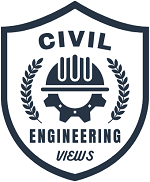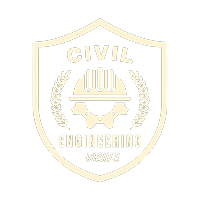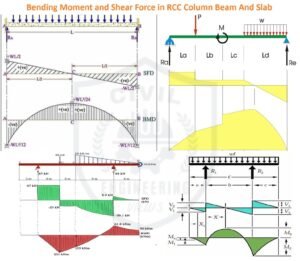What Is Safety Precaution About Civil Construction
Civil construction work involves a myriad of tasks ranging from excavation and earthmoving to structural assembly and finishing touches. Each phase presents unique challenges and potential hazards. What Is Safety Precaution About Civil Construction
Ensuring Safety in Civil Construction Work
A Comprehensive Guide
Civil construction work involves a myriad of tasks ranging from excavation and earthmoving to structural assembly and finishing touches. Each phase presents unique challenges and potential hazards. Implementing comprehensive safety precautions is paramount to safeguarding workers’ well-being and preventing accidents or injuries on construction sites. In this guide, we’ll delve into a variety of safety measures tailored to different stages of civil construction work.
What Is Safety Precaution About Civil Construction
Phase of safety precaution Construction
The basic Safety precaution of construction have four phase mentioned bellow.
- Pre-construction Phase
- Construction Phase
- Post-construction Phase
- Continuous Improvement
1 – Pre-construction Phase
Before any physical work commences, thorough planning and assessment are essential to identify potential hazards and develop appropriate safety protocols. This phase includes
- Site Inspection and Hazard Identification
- Environmental Considerations
- Permitting and Compliance
Site Inspection and Hazard Identification
Conduct a detailed inspection of the construction site to identify existing hazards such as unstable soil, uneven terrain, or nearby utilities. Document potential risks and develop strategies to mitigate them.
Environmental Considerations
Evaluate environmental factors such as weather conditions, temperature extremes, and natural disasters. Implement measures to minimize their impact on workers’ safety and well-being.
Permitting and Compliance
Ensure compliance with local regulations and obtain necessary permits for construction activities. Adhering to regulatory standards mitigates legal risks and promotes a culture of safety.

2 – Construction Phase
During the construction phase, workers are actively engaged in various tasks that require vigilant adherence to safety protocols. Key precautions include
- Personal Protective Equipment (PPE)
- Fall Protection
- Equipment Safety
- Excavation Safety
- Electrical Safety
Personal Protective Equipment (PPE)
Mandate the use of appropriate PPE such as hard hats, safety glasses, gloves, and steel-toed boots. PPE provides essential protection against head injuries, eye hazards, and foot injuries.
Fall Protection
Implement fall protection measures for workers involved in tasks performed at elevated heights. This includes the installation of guardrails, safety nets, and personal fall arrest systems (PFAS) to prevent falls from scaffolds, ladders, or roofs.
Equipment Safety
Regularly inspect and maintain construction equipment to ensure proper functionality and safety. Train operators on equipment operation and emergency procedures to prevent accidents caused by mechanical failures or operator error.
Excavation Safety
Prioritize safety protocols for excavation work to prevent cave-ins, engulfment, or contact with underground utilities. Use protective systems such as shoring, sloping, or trench boxes, and conduct soil tests to assess stability.
Electrical Safety
Mitigate electrical hazards by properly grounding equipment, using ground fault circuit interrupters (GFCIs), and maintaining a safe distance from power lines. Workers should receive training on electrical safety practices to prevent shocks or electrocution.

3 – Post-construction Phase
Upon completing construction activities, it’s essential to address safety considerations related to site cleanup, equipment removal, and project handover. Key precautions include
- Debris Management
- Equipment Disassembly
- Final Inspection and Handover
Debris Management
Remove construction debris and hazardous materials from the site promptly to minimize tripping hazards and environmental contamination. Implement waste management practices to segregate recyclable materials and dispose of hazardous waste safely.
Equipment Disassembly
Safely dismantle and remove construction equipment from the site to prevent injuries during the demobilization process. Ensure proper storage of equipment to maintain its integrity for future use.
Final Inspection and Handover
Conduct a comprehensive inspection of the construction site to verify that all safety hazards have been addressed and the project meets regulatory requirements. Document inspection findings and communicate any outstanding issues to relevant stakeholders before final project handover.

4 – Continuous Improvement
Safety in civil construction work is an ongoing endeavor that requires a commitment to continuous improvement and proactive risk management. Key strategies for promoting a culture of safety include
- Training and Education
- Safety Committees
- Incident Investigation
- Safety Audits and Inspections
Training and Education
Provide comprehensive safety training for all workers, supervisors, and subcontractors involved in construction activities. Regularly review and update training programs to incorporate industry best practices and lessons learned from past incidents.
Safety Committees
Establish safety committees comprising representatives from management and frontline workers to facilitate communication, identify safety concerns, and implement corrective actions. Encourage worker participation in safety initiatives and recognize contributions to promoting a safe work environment.
Incident Investigation
Conduct thorough investigations of any accidents, near misses, or safety violations to identify root causes and prevent recurrence. Implement corrective measures based on investigation findings and share lessons learned across the organization to enhance safety awareness.
Safety Audits and Inspections
Conduct regular audits and inspections of construction sites to assess compliance with safety regulations and identify potential hazards. Develop corrective action plans to address deficiencies and monitor progress towards achieving safety goals. By prioritizing worker safety, implementing comprehensive safety measures, and fostering a culture of continuous improvement, construction companies can create safer work environments and minimize the risk of accidents or injuries on construction sites.
Ensuring safety in civil construction work requires a multifaceted approach encompassing pre-construction planning, diligent adherence to safety protocols during construction activities, and proactive measures during the post-construction phase.

Read More
-
All Step And Precaution For excavation Work
-
Mass Concrete And Benefit And Disadvantages
-
Civil Engineering Important Information And Knowledge











